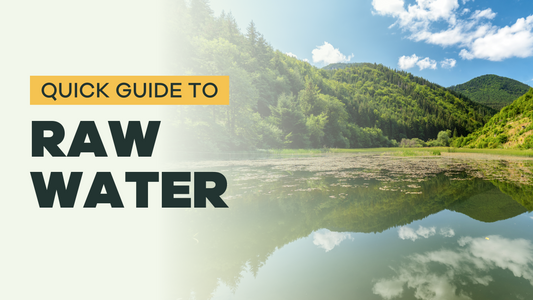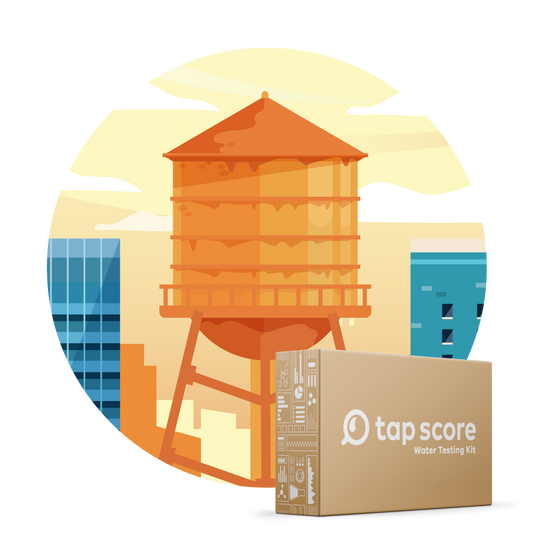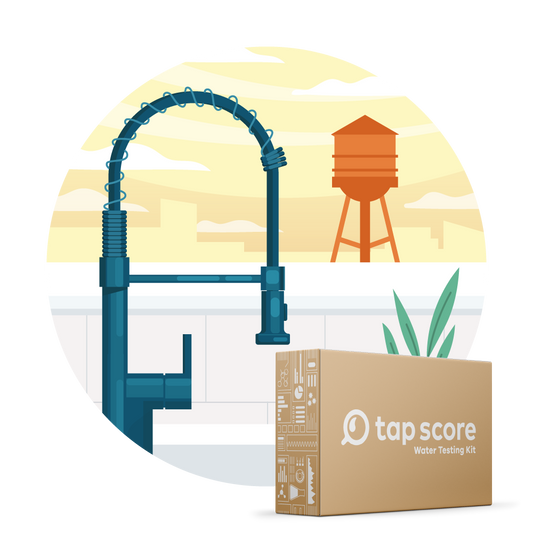
What Chemicals Are Subject to TSCA?
Our blog is written by real experts— not AI. Each guide is carefully reviewed and updated based on the latest research. Plus, with no affiliate links, you can count on unbiased insights you can trust.
For decades, loopholes in the EPA’s law for testing industrial chemicals—also known as the Toxic Substance Control Act (TSCA)—have allowed thousands of potentially harmful products to enter the environment. Limitations in the law let manufacturers continue using dangerous materials—including known carcinogens like asbestos—despite the risks to consumers.
A quick background on the TSCA can give you an idea of why so many chemicals remain unregulated and present in environmental waters that we rely on as drinking water sources.
What is the TSCA?
The law, passed in 1976 to help gather testing data on commercial chemicals to determine their safety, originally intended to give the EPA power to:
- Gather information on whether new and existing chemicals are dangerous
- Require manufacturers to test and report on potentially unsafe chemicals if the EPA does not have enough information available
If these tests reveal that a chemical would cause an “unreasonable risk” of injury to peoples’ health or the environment, the EPA can set rules like requiring warning labels or placing a total ban.
How Many Industrial Chemicals Are There?
Currently there are over 86,000 chemicals in this inventory—and this doesn’t even include the chemicals used in pesticides, drugs, and cosmetics which are regulated by different laws. But unlike pesticides and pharmaceuticals, the chemicals in the TSCA’s inventory have historically been considered “safe until proven dangerous.”
This has placed the burden on the EPA to prove a chemical’s risk rather than relying on chemical manufacturers to prove it is safe during its production.
How Many Chemicals Have Been Tested for Safety?
While the TSCA was strengthened by an update in 2016, its original language played a big part in why so few chemicals have been tested.
Existing Chemicals
After the TSCA was first passed, the EPA listed 62,000 existing chemicals already in use at the time.
Every existing chemical was considered safe unless the EPA could prove otherwise.
But, according to the original law, chemical producers didn’t need to provide safety data to the EPA unless the agency could first show that an “unreasonable risk” might exist or that high exposures were already occurring. A veritable catch-22: How would the agency prove a risk without safety data?
Because of this hurdle, the EPA was only able to review about 1,200 (2%) of existing chemicals for safety in the law’s first 15 years—though the agency estimated that closer to 26% were potentially of concern.
New Chemicals
About 20,000 new commercial substances have been added to the inventory since the TSCA was passed. To assess the risk of new chemicals, the TSCA requires companies to notify the EPA about basic information on a product before manufacturing new chemicals.
Based on the original law, the agency had 90 days to determine whether a new chemical presents an “unreasonable risk” that required regulation or manufacturers could go ahead with production. But, there was a big loophole for chemical manufacturers:
The TSCA did not require companies to provide any particular amount of health and safety data.
The agency relied on this information to be voluntarily reported, and there were no penalties for not providing this information. In 2003, the EPA found that 85% of PMNs it received lacked data on health effects.
Paralyzed by limited data and a short 90-day review period, the EPA was only able to take action on less than 10% of 36,600 commercial-use chemicals between 1979 and 2004.
How Many Chemicals Have Been Banned?
Of all the existing chemicals from the original inventory, the EPA has only managed to ban or limit about a dozen substances:
- Polychlorinated biphenyls (PCBs)
- Chlorofluorocarbons (CFCs)
- Asbestos (though the ban was later curtailed by a court ruling)
- Radon
- Lead
- Mercury
- Formaldehyde
- Hexavalent chromium
- Dioxins
In 2021, the TSCA was updated to include five more chemicals (three bans, two limits):
- Phenol, isopropylated phosphate (PIP)
- Decabromodiphenyl ether (DecaBDE)
- Hexachlorobutadiene (HCBD)
- 2,4,6-Tris(tert-butyl) phenol (2,4,6-TTBP)
- Pentachlorothiophenol (PCTP)
Why Doesn’t the EPA Regulate More Chemicals?
Aside from the limited safety data chemical manufacturers need to provide the EPA, proving that a chemical would cause an “unreasonable risk” has been another major roadblock to regulation.
The term “unreasonable risk” was not clearly defined by the law, leaving the EPA’s safety findings open to being challenged in court.
The EPA also had to show that the benefits of regulating a chemical were greater than the economic losses that a regulation might cause. For example, while asbestos was one of the few substances TSCA managed to ban, this was overturned by courts when manufacturers argued a total ban would hurt the economy and that there were ways asbestos could be used safely.
Has the 2016 TSCA Update Led to More Regulation?
In 2016, the Frank R. Lautenberg Chemical Safety for the 21st Century Act updated the TSCA to give the EPA more regulatory power by:
- Holding chemicals to a higher safety standard of “negligible risk” and “reasonable certainty of no harm”
- Requiring risk evaluations for all high-priority substances in the existing chemicals inventory with clear and enforceable deadlines
- Mandating the EPA to review all new chemicals and prove a new chemical’s safety before it can enter commerce
- Increased public transparency and attempts to provide a consistent source of funding to carry out these responsibilities
But the update has a few limitations, as well: there are still tens of thousands of chemicals currently in use that need testing. The agency needs considerable resources to gather and sift through this massive amount of health and safety data.
For example, based on the deadlines set by the update, if the agency finds it needs to test 10% of existing chemicals for risk, this works out to 8,500 evaluations in groups of 20 to be completed every 3.5 years—which would take 1,500 years to complete.
How Can We Improve the TSCA?
Holding companies accountable for proving the safety of their products instead of relying on the EPA to demonstrate their risk would go a long way in protecting consumers. This is how other industrial products—like pharmaceuticals and food additives—are currently regulated.
In the meantime, as the EPA catches up to 40 years worth of chemicals that have been allowed into the marketplace, there’s only so much that can be done about known and emerging contaminants that are already in the environment.
If you are concerned about potential contaminants in your drinking water, Tap Score offers a range of testing kits that can detect thousands of contaminants—from common contaminants like lead to emerging contaminants like PFAS, 1,4-dioxane, and beyond.
Article Sources
▾https://www.epa.gov/laws-regulations/summary-toxic-substances-control-act
https://fas.org/sgp/crs/misc/RL31905.pdfhttps://www.epa.gov/tsca-inventory/about-tsca-chemical-substance-inventory
http://archive.gao.gov/t2pbat2/152799.pdf
https://www.gao.gov/new.items/d05458.pdf
https://www.ncbi.nlm.nih.gov/pmc/articles/PMC2721862/
https://law.justia.com/cases/federal/appellate-courts/F2/947/1201/153685/
https://www.congress.gov/bill/114th-congress/house-bill/2576






